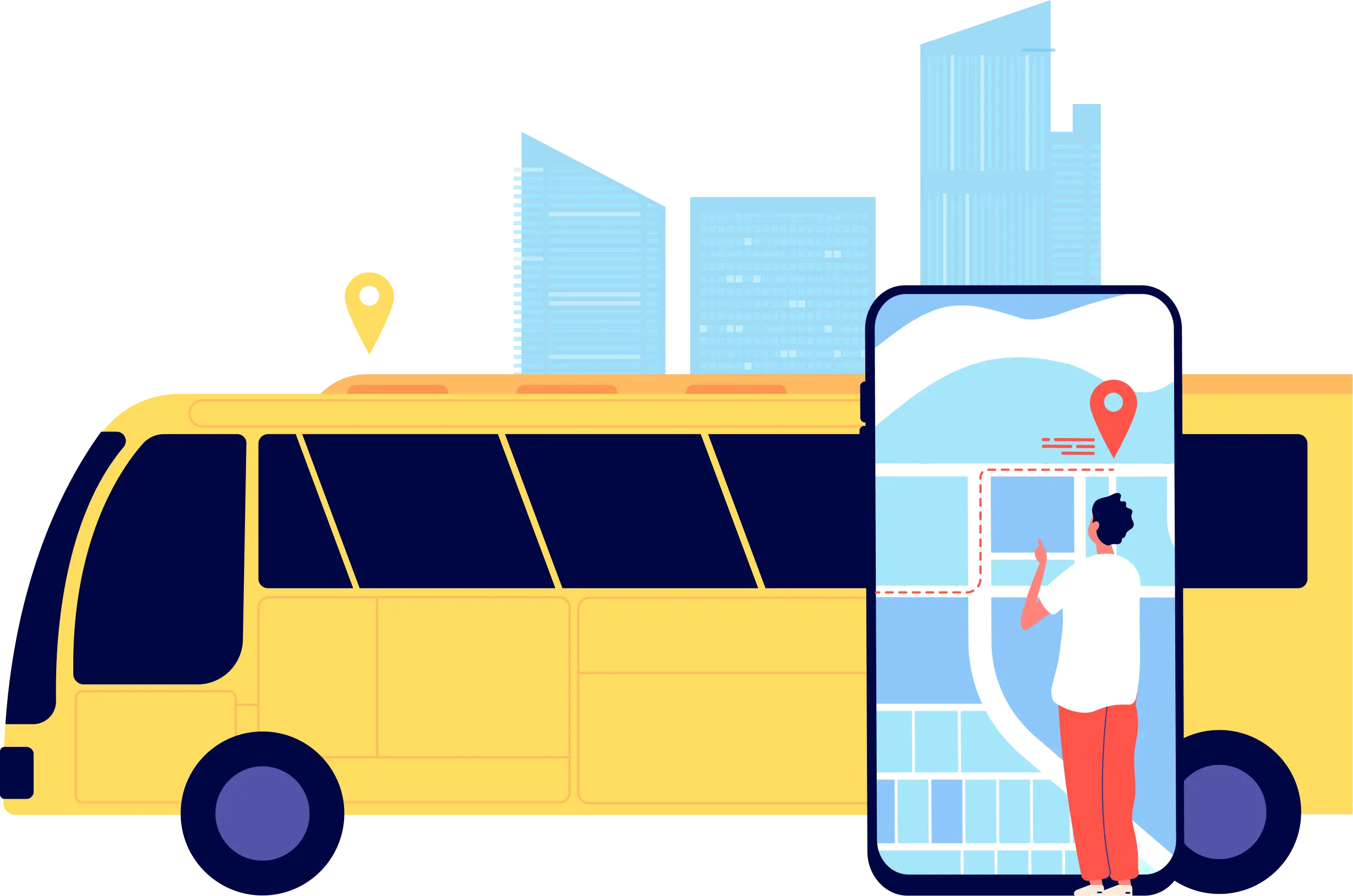
In an era where transportation systems are under increasing pressure to deliver frequent, reliable service, while managing tight budgets, variable traffic, and growing rider expectations, transit agencies and private operators alike are turning to smart solutions. Central to this transformation is bus scheduling software built around artificial intelligence (AI) and optimization. From enhancing on‑time performance to improving operational resilience, the benefits are becoming clear.
Table of Contents
What Is AI‑Driven Bus Scheduling Software?
At its core, AI‑driven bus scheduling software uses machine learning, optimization algorithms and real‑time data to plan, allocate, dispatch and adjust bus services far more dynamically and accurately than traditional scheduling methods. Instead of manual spreadsheets, static timetables and fixed routes, these platforms ingest data such as traffic flows, passenger demand, driver availability, vehicle status and more, and generate schedules that adapt with changing conditions.
In short, the software takes scheduling from a static planning exercise and transforms it into a responsive, data‑driven process, exactly what modern public transport networks need to stay on schedule and efficiently.
Why On‑Time Performance Matters
Reliability is key in public transit. Delays, bunching (where buses arrive in clumps), and unpredictable service disrupt operations and passenger experience. When schedules are bungled, riders lose trust, operational costs increase, and ridership can decline.
AI‑driven scheduling directly targets this problem by optimizing headways and departure intervals, reducing variability. It incorporates traffic, real‑time constraints, and operational elements like driver shifts and vehicle rotations into scheduling. The software enables rapid scenario planning and adjustments, meaning disruptions can be managed better and delays prevented before they cascade. In other words, better scheduling means buses are more likely to run on time, stick to planned intervals, and deliver better service.
Key Benefits of Using AI‑Driven Bus Scheduling SoftwareEnhanced Schedule Reliability & On‑Time Performance
AI can predict and adjust for disruptions, optimize for headway regularity and prevent excessive waiting or bus bunching. Studies show improvements in service regularity when AI is used in scheduling.
Faster Planning and Deployment
Where traditional scheduling might take hours or days of manual labor, AI platforms can generate multiple scenarios in minutes. This speed helps agencies respond to last‑minute changes like driver absences, vehicle breakdowns, or special events without collapsing the entire schedule.
Better Resource Utilization
Optimizing vehicle and driver assignments means fewer under‑utilized vehicles, fewer empty trips, and more efficient usage of the fleet. This contributes to cost savings and improved sustainability.
Improved Passenger Experience
Reliable service and accurate schedules reduce passenger waiting time, build trust and encourage ridership. Real‑time adjustment also improves communication with riders.
Data‑Driven Decision Making & Future Proofing
AI scheduling tools provide transit agencies with access to richer data on operations, delays, driver performance and traffic impacts. This insight allows proactive service improvements and long-term strategic planning aligned with smart‑mobility and sustainability goals.
How It Works: Key Functional Components
AI‑driven bus scheduling software typically includes:
- Demand forecasting – Estimating ridership and service demand per route/time using historical and real‑time data
- Traffic and network modeling – Inputting live and predicted road conditions, congestion, and disruptions
- Vehicle and crew allocation – Assigning buses and drivers to scheduled trips while following labor and rest rules
- Scenario generation & optimization – Running multiple possible schedules and selecting the most efficient and reliable
- Real‑time adjustment and re‑dispatch – Monitoring service and making dynamic changes to address issues instantly
- Reporting & continuous improvement – Using operational data to enhance future schedule planning and accuracy
Real‑World Example: Optibus in Action
Using Optibus, one operator, West Coast Motors, significantly improved scheduling for its 600‑staff operation. The AI tool managed driver preferences, relief vehicles, and break rules more effectively than manual methods. Scheduling time dropped dramatically, shift planning improved work-life balance for drivers, and overall service reliability increased as operations became more efficient.
Challenges and Implementation Considerations
While the benefits are clear, successful implementation requires attention to several factors:
- Data quality & integration – AI tools need accurate, real-time data to function effectively
- Change management – Staff training and cultural adaptation are essential to move from manual to AI‑powered systems
- System compatibility – Scheduling software should integrate smoothly with existing transit and dispatch systems
- Cost vs ROI – Initial investment is necessary, but long‑term gains often outweigh the costs
- Continuous refinement – AI models must be regularly updated for ongoing performance improvements
Future Outlook: AI + Bus Scheduling = Smarter Transit
The combination of AI and bus scheduling software is set to evolve rapidly. More real-time data sources, predictive modeling, and integration with multimodal networks will make transit systems even more intelligent. Sustainability will also play a larger role, with emissions reduction and fuel efficiency becoming embedded in scheduling goals.
Conclusion
For transit agencies aiming to boost on‑time performance, improve rider satisfaction, and manage operations efficiently, adopting AI‑driven solutions like bus scheduling software is essential. With measurable benefits in reliability, efficiency, and scalability, these tools represent the future of public transportation planning.